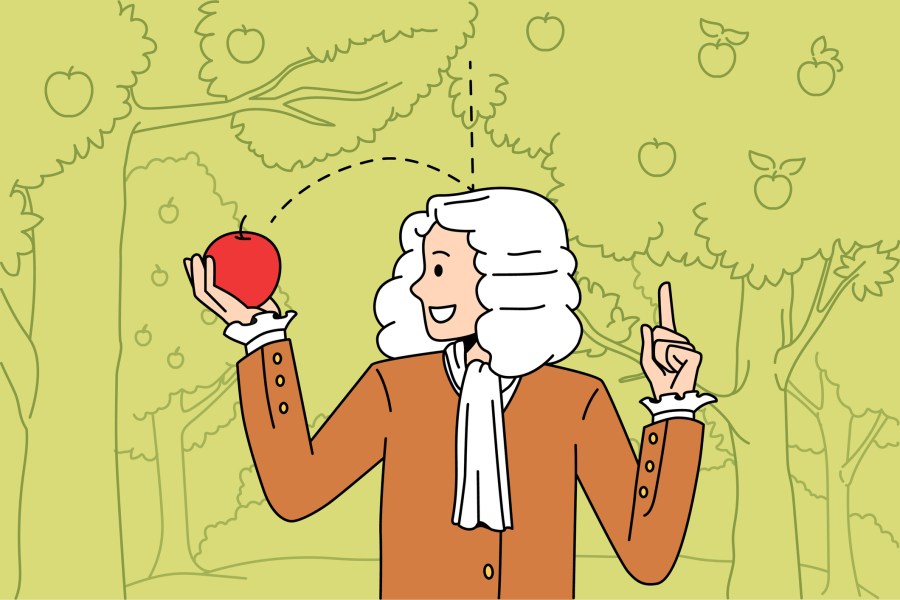Muslim Law Breast Feeding in Public

Much of science is about discovering the hidden laws that guide the universe. At some point a biologist sought to understand how trees eat light, and a chemist wondered how salt affects the temperature of boiling water. While some of these discoveries are more obvious than others, each plays an intricate role in shaping reality as we know it.
The law of interaction, also known as Newton's third law of motion, deals with the way that various forces interact to create movement, and helps us to understand what happens when two moving forces meet. Join us for a simple breakdown of the law of interaction, how it works, and real-life examples of Newton's third law of motion.
Newton's Laws of Motion

Newton was born in 1642, the same year that Galileo, the famed scientist and astrologer, passed away. Newton picked up right where Galileo left off when it came to the rapid advancement of science and made some of the most important mechanical discoveries in history. His law of interaction is actually the third in a trilogy of laws that were discovered by Sir Isaac Newton.
Newton was particularly interested in motion and was among the first scientists to study it closely enough to formulate solid laws outlining how it works. You've likely heard the story of Newton as a young boy sitting under an apple tree. A quick bonk on the head from a falling apple supposedly set into motion his study of gravity and movement. Though it didn't actually happen just like that, Newton did go on to develop what has collectively become known as Newton's three laws of motion. By understanding the first two laws of motion, it should be a little easier to understand the third and exactly how and why it works.
Newton's three laws of motion are:
- The law of inertia
- The law of mass and acceleration
- The law of motion

Newton's first two laws deal with how force impacts the movement of a single object. His first law of motion states that if you have a single object that is at rest, it will always remain at rest unless it's acted on by an outside force that causes it to move. Take for instance, a soccer ball in a field. That soccer ball will remain motionless until the wind begins to blow, or a kid comes over to give it a kick. The ball will not move unless another force makes it do so.
The same is also true for an object in motion. If you were to throw an object into a vacuum, where there were no outside forces to act on it, that object would stay in motion forever. Luckily, gravity is an ever-present force in our world, so we can always count on it to make sure things don't go flying off into space.
The second law says an object's rate of acceleration will always depend on the object's mass as well as the net force acting upon it. Basically, when you kick a ball, how fast and far you can make it go depends on how light or heavy the ball is and how hard you kick it. This is because the mass interacts with gravity (or other forces acting upon the ball, like wind) to determine how slowly or quickly the ball slows down).
It might be helpful to imagine this second law with a smaller ball instead. Imagine that a professional baseball player throws two balls, with the same amount of force. One ball is a regular baseball and the other is made of lead. The ball made of lead will drop to the ground much faster than the regular baseball. Though both balls were thrown with the same amount of force, the ball with more mass is affected differently by gravity.
What Is Newton's Third Law of Motion?
Now for Netwon's third law. Unlike the first two laws, which deal with a single object, the law of motion considers what happens when two objects interact with each other.
It states that "for every action, there is an equal and opposite reaction." In simple terms, this means that every time two objects interact, they both exert the same amount of opposing force on each other.
In other words, if object A exerts a force on object B by pushing on it, then object B will always push back on object A just as hard. This constant play of opposing forces creates a sort of universal balance that causes forces to always occur in pairs. This is why Newton's third law of motion is sometimes referred to as the "law of interaction" or the "law of action and reaction."
Real-Life Examples of the Law of Interaction

Sometimes the easiest way to wrap your head around scientific concepts is to look at examples from real life. Let's start with a simple one. If you're sitting in a chair right now, then your body is exerting a downward force on the chair. So why doesn't the chair collapse? Because it's exerting an opposing upward force on your body.
The same laws apply to movement. Each time you walk across a floor, your feet push slightly backward on the floor. The floor then responds by exerting an opposing forward force, which is what allows you to move forward. When you decide you want to speed up and run, you increase the force your feet exert on the ground, and the ground, in turn, exerts more force back. This is not only why you're able to move forward faster, but also why your feet may sometimes hurt if you've been running for a while.
There are plenty of other examples of newton's third law of motion in sports. For instance, you may have noticed that the harder you kick a ball, the more likely it is to sting your foot a bit. That's because each time your foot exerts a force on the ball, it's going to exert the same force back.
How Does the Law of Interaction Work?

As you look over the examples above, a key question may occur to you. If you kick a ball hard enough to send it flying through the air, why doesn't it send you flying off in the opposite direction? Particularly if it produces the same amount of opposing force when it makes contact with your leg? This is where the importance of understanding Newton's laws of motion comes into play.
It all goes back to the fact that you have a much greater mass than the average soccer ball. While the same amount of force is technically exerted on both your leg and the ball, the effect is far more noticeable on the ball because it weighs so much less. In other words, because the ball is lighter than you are, the same amount of force can accelerate it a lot further than it can you.
But say that the ball was made of stone and weighed just as much as you do. In order to move it, you'd have to kick it with far more force than a regular soccer ball. You'd also probably be a lot more hesitant to do so, knowing that your leg would also be treated to the exact same amount of opposing force upon contact.
Source: https://www.reference.com/science/law-interaction-e9decd79f4e7ea44?utm_content=params%3Ao%3D740005%26ad%3DdirN%26qo%3DserpIndex&ueid=f1d876be-5ed4-4b07-a604-e3dbc1ec1a69